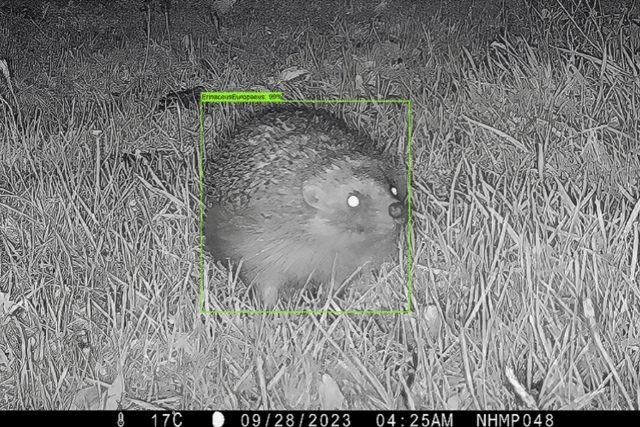Scientists use special AI developed in Liverpool to save hedgehogs
and live on Freeview channel 276
Artificial Intelligence (AI) is slowly becoming a part of everyday life, producing fake images of celebrities, pretty disastrous advertising material for Glasgow's Willy Wonka blunder and writing detailed, university-level essays. Some people find the rise of AI concerning, worrying it will become self-aware or take our jobs, however, one Liverpool university is using the technology to save adorable hedgehogs.
According to the British Hedgehog Preservation Society (BHPS), hedgehog populations in country areas have dropped by between 30% and 75% since 2000. But, there could be hope for the mammals thanks to a unique project, combining citizen scientists and artificial intelligence created at Liverpool John Moores University (LJMU).
Advertisement
Hide AdAdvertisement
Hide AdThe new National Hedgehog Monitoring Programme led by the BHPS and the People’s Trust for Endangered Species will use trail cameras to gather data on hedgehogs at sites including parks, gardens, woodlands and farmland. Data from the project will provide the first reliable estimate of the UK’s hedgehog population – and allow conservationists to work out how best to help the much-loved animals.
There are already over 300 cameras spread across 13 sites, and in the next three years 40 sites will be covered by more than 1,000 cameras, each one taking a picture every time its sensors detects movement.


The huge number of images means a special AI algorithm, developed at Liverpool John Moores University, will be used to take out any that don’t have wildlife in them. Thousands of pictures will still need to be sorted by eye – which is why the project is appealing for volunteers to go onto the citizen science platform MammalWeb.
The data generated will then be used to develop a robust estimate of how many hedgehogs there are in the UK, and how populations change annually. It means experts can work out just which places and habitats are best and worst for hedgehogs, and even what might be causing declines.
Advertisement
Hide AdAdvertisement
Hide AdDr Henrietta Pringle, National Hedgehog Monitoring Programme Coordinator at the People’s Trust for Endangered Species, said the first use of AI for a hedgehog conservation project would help produce the first reliable nationwide survey. “Before we can put practical conservation measures in place we need to understand where they are and why they’re declining,” she said.
“The results will also allow us to see regional and habitat differences, and identify what factors impact them in different places, which will not only be fascinating but also incredibly useful for their long-term conservation.”
Professor Paul Fergus and Dr Carl Chalmers, of LJMU’s School of Computer Science and Mathematics are used to sifting through millions of images, but have created Conservation AI, a machine learning platform which identifies animals in the wild with almost 99% accuracy and is used by leading conservation organisations to monitor everything from apes to pangolins.
Dr Chalmers said: “This is a really exciting project so we are delighted to help. We can assess very large numbers of images and hopefully provide the project with some useful data.”
Comment Guidelines
National World encourages reader discussion on our stories. User feedback, insights and back-and-forth exchanges add a rich layer of context to reporting. Please review our Community Guidelines before commenting.
